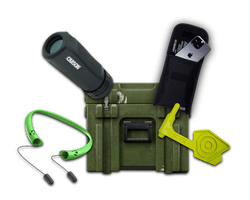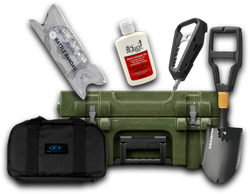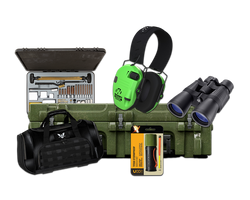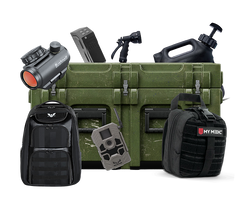
Long Term Food Storage (what to get and how to store)
You don't need to be a nester with 100 acres or a doomsday prepper to set up a food stockpile. Long-term food storage ensures that you have enough food in hand in case of a financial setback or emergency. It is important to have a solid supply of dried food, canned food, and shelf-stable items to fulfill your family’s food needs in the best possible way.
Moreover, long-term food storage isn't only a reassurance. Also, it is often cost-effective, as you can buy food items in bulk at cheaper rates easily. Additionally, if you are preserving items from your garden, it would be even more economical.
What to get and how to store your food for the long term?
However, to make the most out of your food storage, you must know what you should get and how to properly store items. This knowledge will ensure the safety and durability of your food items in the best possible way.
Do you want to learn about what you should get and how to use appropriate long-term food storage? Here is a comprehensive guide you should consider in this regard.
So, here we go:
What to get for long-term food storage?
Even though dried, canned, and shelf-stable food items are always highly beneficial to consider for long-term storage. However, various food items have a shelf life of about 20 years. So, whenever you want to get started with long-term food storage, these items will be your best foundation to consider.
Here we have enlisted food items with a longer shelf life that you must know:
- Corn
- White rice
- Wheat
- Rolled oats
- Pinto beans
- Sugar
- Pasta
- Dehydrated carrots
Other than these items, you can also store the following food items for long term storage, as these also come up with a longer shelf-life:
- Dried apples
- Baking soda and baking powder
- Potato flakes
- Oats
- Salt
- Peas
- Beans
On the other hand, high-fat food items such as dried eggs, nut butter, nuts, and oils will last for over a year only. These food items will also suit long-term food storage, but you must rotate these more often because these will expire sooner than your stored grains.
If you are wondering how much you should store, here are a few good estimations:
- 25lbs of corn, white rice, wheat, and other grains are usually enough for an adult monthly.
- While 5 lbs. of dry beans will last for one month for an adult.
So, you can easily estimate how much food you should buy to store accordingly.
How to store food for the long term?
Here are the key tips for appropriate long term food storage to know:
The ideal temperature to store food for long term
The ideal temperature for long-term food storage is 40-to-75-degree F. if your storage area gets hotter, then make rotations often for ensured food quality. Keep your stored food items in a dried place raised off your floor. This trick will ensure proper air circulation.
Also, you should prefer storing your food items in a dark environment.
Rotation is key to maintaining quality.
The best practice for long-term food storage is to place your oldest food containers in the most accessible place. On the other hand, place your newer food containers far from your access. This method will help you keep food from going bad before you eat.
Another key to storing food items for the long-term is to eat the food items you stored and store the items you brought for use. When you eat your stored food on and off, it will let you keep inspecting your food items regularly.
Rotation is also important because it will let you experience cooking items that you don’t use otherwise. For example, you can learn how to prepare dehydrated veggies.
Preserve your food
Preserving your food doesn’t require you to grow your food, even though these go hand in hand. However, you can get your required items from roadside stands, farmer’s markets, or directly from any local producer to preserve your food.
If you want to leap home food preserving, you must learn about different preserving methods. Most common methods of preserving food include:
- Cold storage
- Canning
- Dehydrating
- Freezing
- Fermentation
You can either use one of these methods or a combination of these to preserve your food items for long-term storage.
The best packaging for long term food storage
The best packaging for long-term food storage is what keeps rodents, oxygen, light, and insects out. Foil pouches are a popular packaging choice for long-term food storage as this block out oxygen and light.
Most importantly, foil pouches are suitable for small and large quantities of dried food items. When using foil pouches for long-term food storage, ensure to keep them in food-grade containers or plastic buckets. These will keep your food from insects and rodents and restrict them from contaminating your food.
If you seal these pouches properly and store them in appropriate conditions, they can easily last for years.
Other food containers that you can use to store your food for the long term include:
- Totes
- Baskets
- Boxes
- Crates
- Glass jars
- Shelves
Simply figure out the most suitable food containers as per the quantity you want to store. Choosing appropriate food containers will make it easier to hold your stored food for longer.
Key highlights from long term food storage you must know:
- Regardless of the packaging material you are using, dry food items, for example, beans and rice, always stay best in an oxygen-free, dark, and cool environment.
- Dehydrated foods must have below 10% moisture level when stored for longer.
- Moist food items in even oxygen-free environments are highly prone to developing deadly toxins.
- Rotation is highly important for long-term food storage to maintain food quality.
Final thoughts
So, after knowing about long-term food storage, you should start working on storing food for your family. In the beginning, the idea must be to try and store at least a year’s food items for your family. Always remember the best practice to avoid waste and disappointment is to start small.
Image by Filmbetrachter from Pixabay
Share this article








